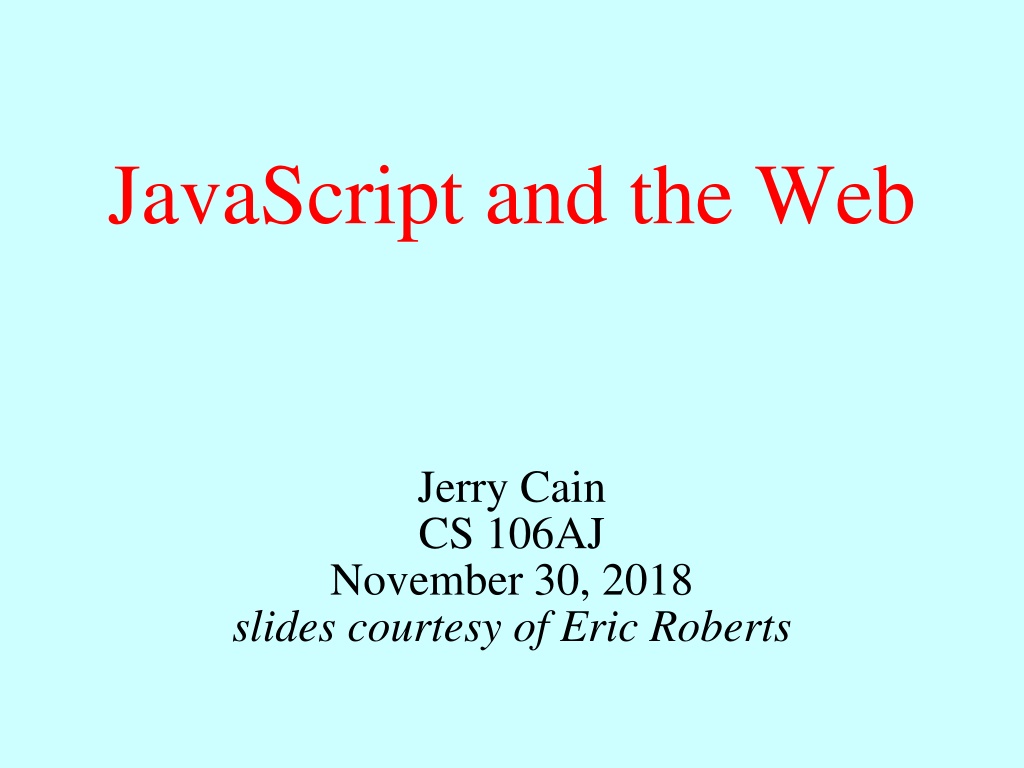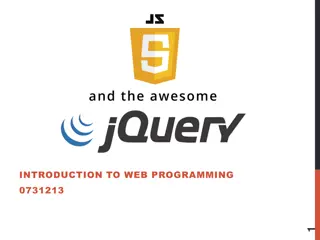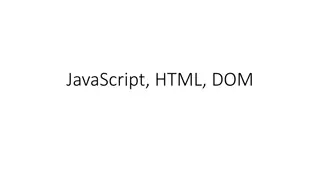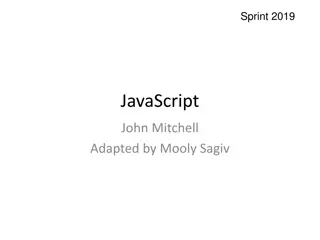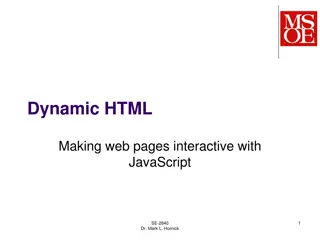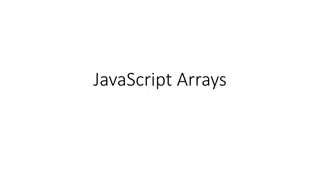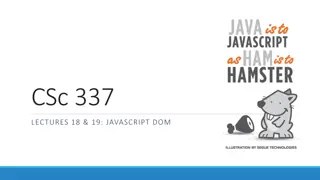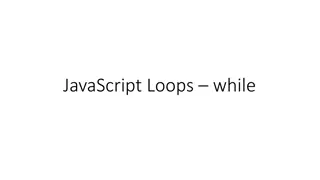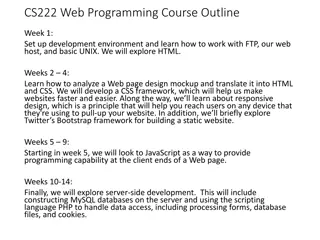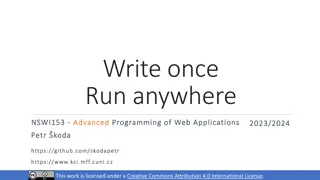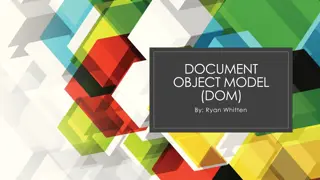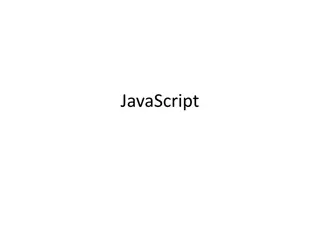The Evolution of JavaScript and the Web
Exploring the historical roots of the World Wide Web, from early visions by pioneers like Paul Otlet and Vannevar Bush to the development of the modern web by Tim Berners-Lee. Learn about the Document Object Model (DOM) and how JavaScript interacts with web pages to manipulate content. Dive into writing text to HTML elements and an improved version of the classic "Hello, World" example.
Uploaded on Oct 06, 2024 | 0 Views
Download Presentation

Please find below an Image/Link to download the presentation.
The content on the website is provided AS IS for your information and personal use only. It may not be sold, licensed, or shared on other websites without obtaining consent from the author. Download presentation by click this link. If you encounter any issues during the download, it is possible that the publisher has removed the file from their server.
E N D
Presentation Transcript
JavaScript and the Web Jerry Cain CS 106AJ November 30, 2018 slides courtesy of Eric Roberts
The History of the World Wide Web The ideas behind the web are much older than the web itself. In the early 20th century, the Belgian bibliographer Paul Otlet envisioned a universal catalogue that would provide access to all the world s information in an interconnected structure. In 1945, the director of the wartime science program Vannevar Bush published an article entitled "As We May Think," which envisioned an electronic archive of linked information. In the early 1960s, computer visionary Ted Nelson coined the terms hyperlink and hypermedia. The modern web was developed in 1989 by Tim Berners-Lee at CERN, the European particle physics laboratory in Geneva, Switzerland. Berners-Lee developed the first version of the Hypertext Markup Language (HTML). Use of the web grew quickly after the release of Mosaic browser in 1993 and Netscape Navigator in 1994.
The Document Object Model When the browser reads a web page, it first translates the text of the web page into an internal data structure that is easier to manipulate under the control of a JavaScript program. That internal form is called the Document Object Model, or DOM. The DOM is structured into a hierarchy of data objects called elements, which usually correspond to a paired set of tags. The relationship between the HTML file and the internal representation is similar to the one between the external data file and the internal data structure in any data-driven program. The browser acts as a driver that translates the HTML into an internal form and then displays the corresponding page. Unfortunately, the DOM is poorly designed, giving rise to a structure that is difficult to understand. The best strategy is to learn only those parts of the DOM you need.
Writing Text to a <div> Element The strategy we ll use in today s examples uses only two features of the DOM, both of which are reasonably simple: Naming an element in the HTML file. It is often necessary to refer to a specific element in the web page from inside the JavaScript code. To do so, you need to include an id attribute in the HTML tag for that element that gives that element a name. JavaScript code can then find that element by calling document.getElementById(id). Adding HTML content to an existing element. The HTML code inside an element is available by selecting the innerHTML field of the element. The result is a JavaScript string that you can examine and modify. The code on the next slide writes the string "hello,world" into the <div> element whose id attribute is "log".
An Improved Version of HelloWorld <!DOCTYPE html> <html> <head> <title>Hello World</title> <script type="text/javascript"> function sayHello() { let div = document.getElementById("log"); div.innerHTML = "hello, world"; } </script> </head> <body onload="sayHello()"> <div id="log"> <!-- This is where the text eventually goes --> </div> </body> </html>
Simulating a Countdown <!DOCTYPE html> <html> <head> <title>Hello World</title> <script type="text/javascript"> function countdown(n) { for (let i = n; i >= 0; i--) { log(i); } } function log(str) { let div = document.getElementById("log"); div.innerHTML += str + "<br/>"; } </script> </head> <body onload="countdown(10)"> <div id="log"></div> </body> </html>
